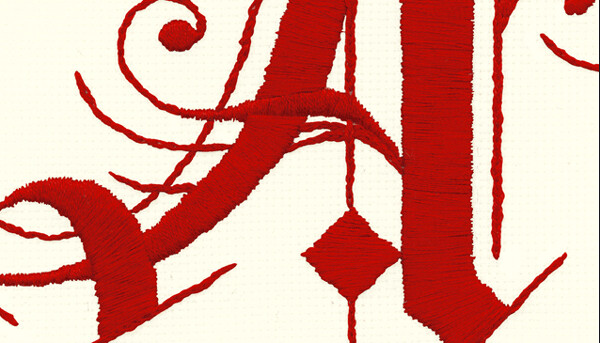Scarlet Letters

Calls to reform and improve education have a long US history. Standbys in liberal arts take the most heat for being out-of-date or tainted with patriarchal racism, an accusation leveled by voices who clearly see the male sins of Jefferson but not of Marx. On either side people pick and paint their ideal to suit their room décor. A fine argument can be made for casting aside the boring old standards in favor of contemporaneity. The result of a Top Ten in education seems lost on the happy minded reformers finding constant justification in the swing of the moment.
Among the castoffs you’ll find Hawthorne’s ScarletLetter. Not written with two thumbs, the novel is a difficult read for students who object to “that old stuff.” Instructors who are little better versed than their students likewise take comfort in easier fare with less challenge and the bright appeal of being timely as if the shorter the time span the wiser we become. Those in the “now” stream of education seem well suited to the role of paid child minder posed in academic gowns.
But take a while to reconsider the useless old story of Hester, Arthur, and the scarlet letter. The year Hawthorne presented the story was 1850, a time some say was dominated by patriarchal horror. Maybe so, as one of Hawthorne’s ancestors was a sitting judge at the time of the Salem witch furor. But as is so often so, what actually develops is far more complex and interesting than the narratives of know-it-alls working from the vast wisdom of recent interpretation on the latest Top Ten. Hardly a new tale, Hawthorne’s account points to social questions and issues we still face. Apparently relabeling doesn’t change much. Concerns Hawthorne saw in the middle of his century are still here.
The quick and easy view catches the unequal treatment given a woman forced to wear a scarlet letter A in recognition of her adultery. Most everyone sees that for what it means and can go happily off touting higher values of fairness they apply with the same result as that they claim to counter. What results of removing one scarlet letter when it’s replaced by more letters of equal separating value? It’s possible to argue that one scarlet letter in contention is less a burden than the dozens of gender letters buoy marking the social seas of today. Modernizing reformers who want done with Shakespeare, Twain, or Hawthorne are giddy with delight putting scarlet letters on others without taking note of the letter I landing of them and sticking. A populism in new scarlet letters doesn’t make them any more useful or less dangerous than the example set out by Hawthorne over a century ago. I doubt understanding is found by being stuck in the moment amid contemporary scarlet letters of politics, gender, race, belief, etc. Each of us can work at becoming a thoughtfully understanding human being or we can go about applying scarlet letters and feeling very good about it.
A practical problem (I’d say a danger) in walking back on content in favor of ease comes from the lack of challenge. Minimizing complexity allows more students to succeed at what bores nearly all into active disdain for learning. I remember lazy teachers who threw a book at us and considered job done. Think how much worse that is if the book offered has little to offer. A scholastic diet of smiley face platitudes is not strength building fare. It is the mush spread around by uninspired instructors to occupy the time of unchallenged students. It is babysitting at a high cost and sad result.
A telling example of educational decline is seen in the previous President’s address on history to a world audience where he was apologetic about the Inquisition and Crusades. That would be the Spanish Inquisition and Crusades before the Americas were known and having little to do with the US emerged from a different thrust called the Enlightenment. It makes a difference when national leaders get away with using history as a narrative tool because they and their audience don’t know better. (Even an average thinker should have been able to see the Crusade Era was not a one-sided event. Had Obama looked up battles and dates he’d find more invasions into Europe than out of it, details contrary to his politics. — Lepanto 1571 & Vienna 1683 were both well after the Crusades and fought inside Europe.)
Another revealing example of education in blinders is foreign election interference. Voices speak loudly against it, but why is interference only lately recognized in one form when it’s been going on for a long, long time? Who imagines China’s decades’ long involvement in American higher education doesn’t have a political motive to influence the future and future votes? Anyone? We should see it because after-all we do the same through USAID, don’t we? The question becomes how deeply important institutions of US higher education are drawn into dependence on foreign funds and the extent to which institutions protect and disguise these arrangements. Who believes China puts significant funding into Ivy League schools for charitable purposes expecting nothing in return for its investment? Generous support dulls unwanted inquiry and revs up other support. This helps explain why the Dalai Lama is not allowed on campuses where Hamas is welcome. (China battles internal drug addiction but is complicit in manufacture and export to the US.)
Or ask why (other than to influence future votes) oil rich religious monarchies put funds into US curricular innovations. Innovation in this instance is propaganda aimed at influencing elementary and secondary students to have favorable views of religious tyrannies, as if by rejecting religious rule a democracy was acting unfairly. How tolerant of blasphemy law should we be? Under the Common Core smokescreen the active threat of public humiliation or torture is waved off as a non-concern that just happens to hang threateningly over the head of anyone who questions or thinks otherwise. The scarlet letter A for adulterer has a modern form as B for blasphemer. Not recognizing the first form makes it more difficult to counter its successors.
